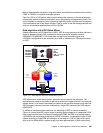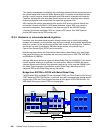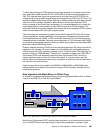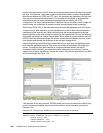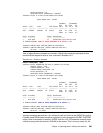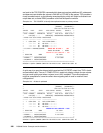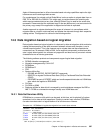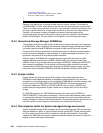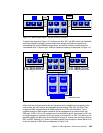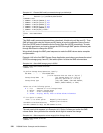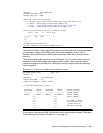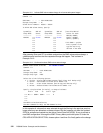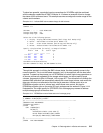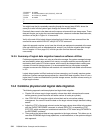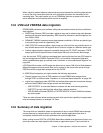
Chapter 14. Data migration in zSeries environments 309
Figure 14-7 SMS Storage Groups - migration source environment
To explain this approach, Figure 14-7 contains two SGs, SG1 and SG2, which are distributed
over three storage controllers. Assume these three storage controllers are going to be
consolidated into a new DS8000 storage server, and that the number of volumes will be
consolidated from 12 down to four, with their respective capacity as displayed in Figure 14-7.
Figure 14-8 Utilize SMS Storage Group and Volume status to direct all new allocation to new volumes
When both the old hardware and the new hardware can be installed and connected to the
host servers, the new volumes are integrated into the existing SGs, SG1 and SG2. Then
change the SMS volume’s status to disable volumes A to G for new allocations. This is
possible through an SMS system command and is propagated to all systems within this
SMS-plex.
DISABLE,NEW or D,N implies that all new allocations which are directed to SG1 can
no longer happen on volumes A to G but must go to volumes DS1 or DS2. This allows you to
gradually migrate the data from the old devices A through G onto the new and larger devices
DS1 and DS2. Example 14-7 shows a pre-defined batch job to modify the volume status of all
of the old volumes in SG2 which are displayed in Figure 14-8.
Storage subsystem 2
FICON
Storage subsystem 1
Storage server 3
FICON
FICON
ACB
H
J
G
LMKE
F
D
SG1
SG2
FICON
Storage subsystem 1
Storage server 3
FICON
FICON
ACB
H
J
G
LMKE
F
D
SG1
SG2
New Storage server
FICON
DS4DS2
DS3DS1
Not drawn to scale
Storage subsystem 2
RO *ALL,V SMS,VOL(JJJJJJ),D,N
RO *ALL,V SMS,VOL(KKKKKK),D,N
RO *ALL,V SMS,VOL(HHHHHH),D,N
o o o
RO *ALL,V SMS,VOL(BBBBBB),D,N
RO *ALL,V SMS,VOL(CCCCCC),D,N
RO *ALL,V SMS,VOL(AAAAAA),D,N
o o o



